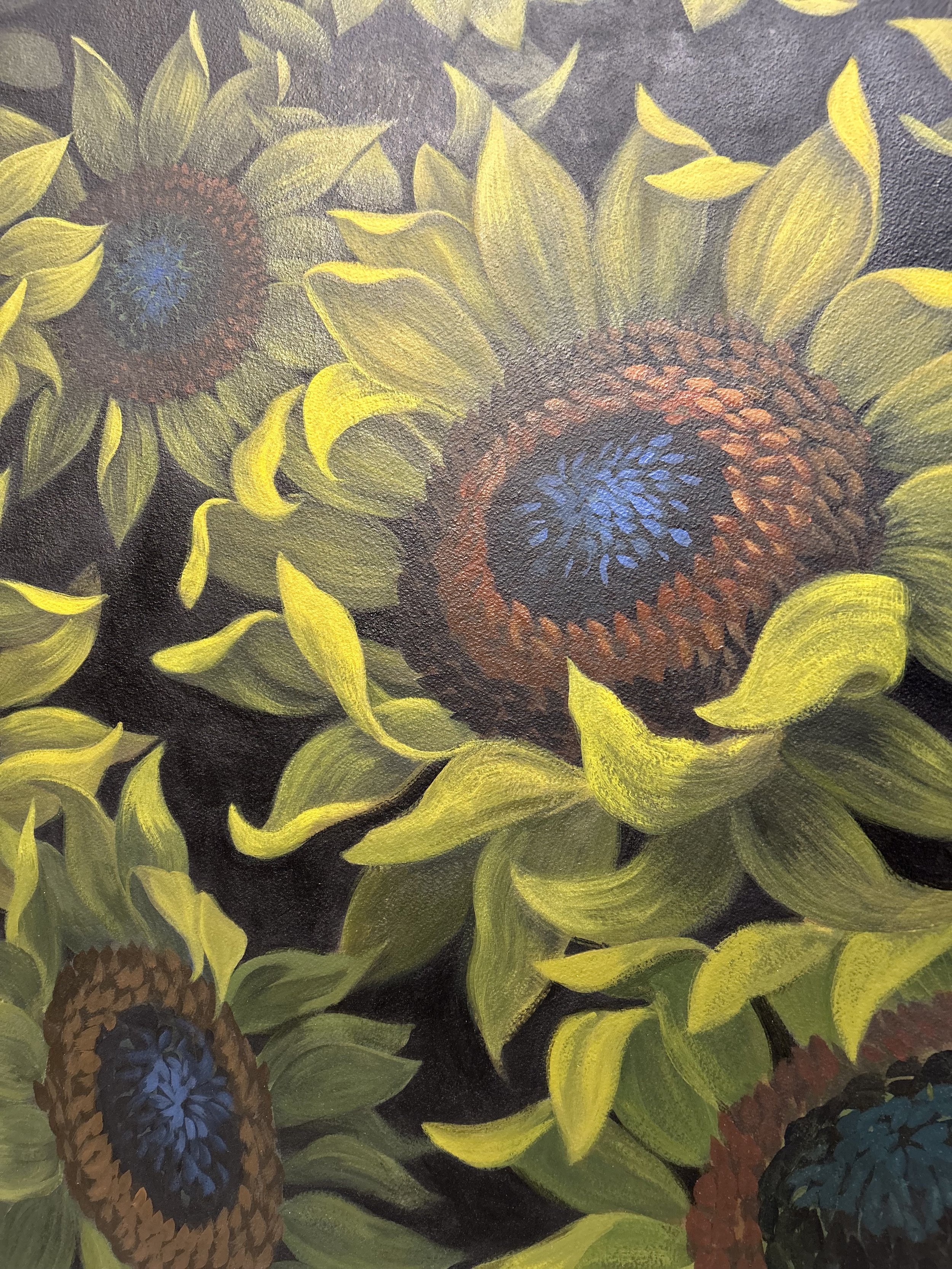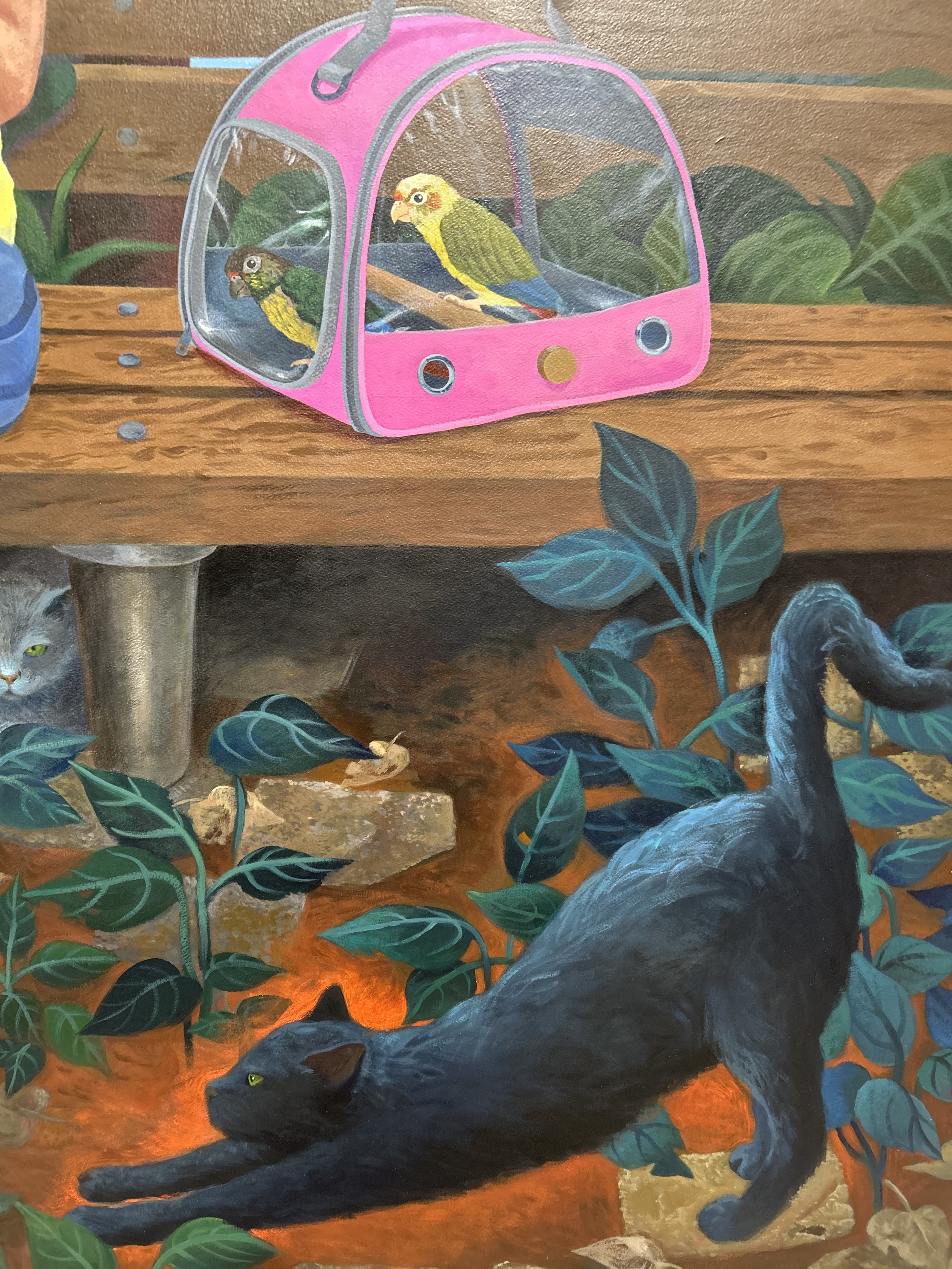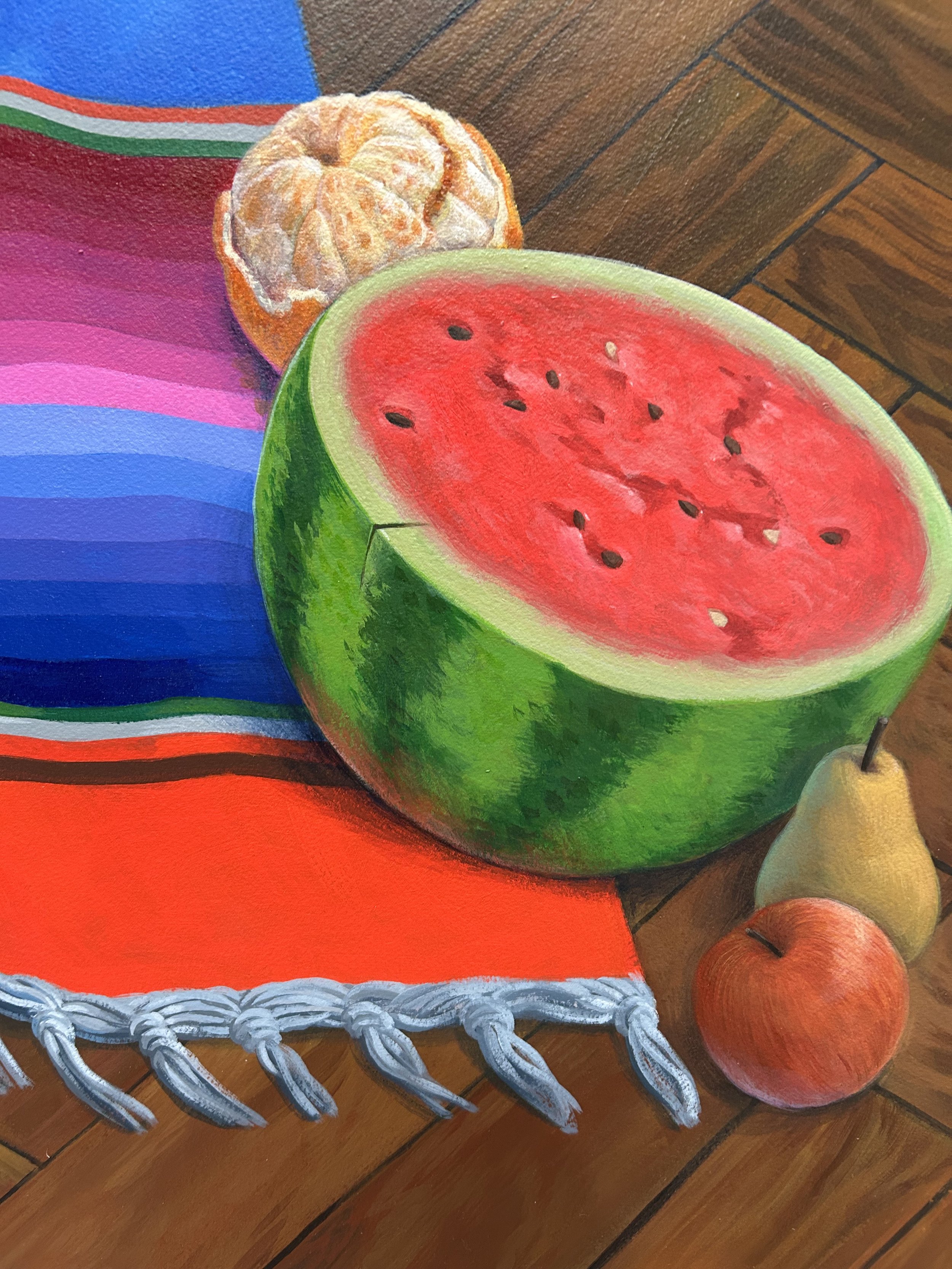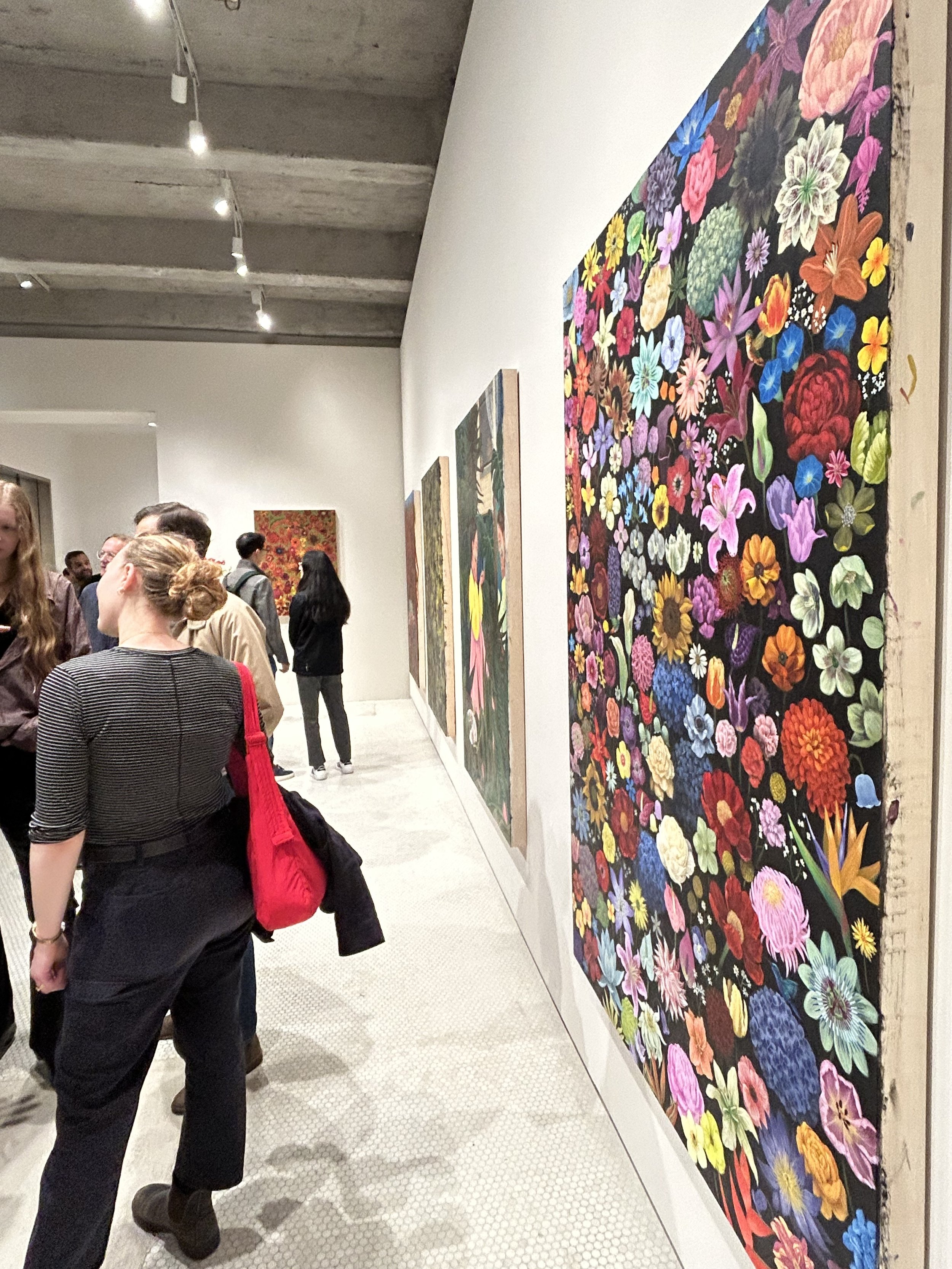A Find In The Everyday
Introduction by Maria Guerrero
In this article, art historian and New York City correspondent Osvaldo Martinez Abreu reveals the layers within the intimate and symbol-rich world of artist Sally J. Han. Writing for Women in the Arts, he invites readers to explore Han’s delicate balance of vulnerability, memory, and strength. This exhibition is on view at Salon 94 in Manhattan, through August 8, 2025.
Falling into a kaleidoscopic trance of remembrance, Jingmei “Sally” J. Han (b. 1993, Shenyang, China) renders the reality of past experiences, which she interlaces with observations of the present and the every day—an almost still life of memories. For Salon 94, Han’s entitled exhibition, " Wallflower," presents eight paintings that enamor a contemplation on quiet and rather ephemeral findings, brought by both past and present. In vivid strokes, Han frames a visual exposition of rendered vignettes that capture intimate everyday moments. Han’s revelations of the every day are illuminated through depicted flowers, birds, fruits, drinks, and reflections from mirrors. These iconographic presences bridge ideas of the natural world, internal reflection, isolation, connections with self, and found materialism of the everyday.








Bold in color and artifices, Han permeates her large panels with imagery of fluttery birds, ripe fruits scattered about, and floral landscapes enveloping backgrounds, all layered with contemplative solitude that resonates through a historical lens, harboring finds from the traditional floriography - the language of flowers - and the introspection of personal mediation, echoing finds in Frida Kahlo’s portraits. Here, among still scenes, Han revels in the found intimacy of the every day, as well as the monumentality of memory and its presence on personal account.
Reflecting on the inner self and the adjacent outer world, Han cultivates remnants of personal environments. From her current New York City surroundings, Han records finds in displays of bench seated readers, and lounging cats outside of bodegas. Han also reflects on her birth home in China, as well as her youth raised in South Korea, with her Korean heritage marked by the figure in Fiesta, wearing a traditional "Hanbok," a garment housing 1,600 years of history. Han echoes the rendered reality of Kahlo’s work as the artist depicts her own identities, sufferings, and resilience. Physical and emotional states, connected to the artist’s Mexican culture and background, were interims to facilitate paintings of self-expression and materializing the complexity of the inner self. A gradual observance of these objects forms congealed imagery that reflects the different intricacies and moments that create these memories. They are not singular makeshifts, but adhered remnants reflecting multitudes.







One must not look solely at a grand rendering, but instead, Han’s images dictate viewers to assume a close inspection of the embedded pictorials that permeate. All of these individual imbued forms congeal a narrative that details oddments of reflection on past and present. Remembrance does not solely reverberate through pondered mirrored reflections, but instead, Han utilizes traditions of floral communication echoing back to pre-Columbian Mesoamerican cultures and found through to the 19th century’s Victorian era. In bright surrealist hues, Han details botanical landscapes where Carnations speak on disdain, Dahlias on instability, Chrysanthemums on cheerfulness, Peonies on bashfulness, Sunflowers on adoration, and Wallflowers on fidelity in adversity. These unspoken languages are tools of guidance, as Han details memories of her New York City. These ephemeral floral icons harbor a reflection of time and how this constant creates changes and shifts. With it, our perceptions of ourselves and our surroundings may change, just as time withers and changes the natural world around to new states of being.






Alongside solitary figures, Han expresses an awareness of being shaped by contemplation and retrospection. Herself, alongside we the viewers, are of memories. These memories form the cemented truth of the personal self. Han invites us to connect with the literal and metamorphic meaning of the exhibition’s title "Wallflower." Rendered literally in backgrounds overflowing with botanical flora, there is also a figurative ask to compose our solemn reflection on our history. In mirroring the figures, isolated and connecting with themselves, Han asks us to reflect on remembering and what those memories cultivate in ourselves. These works are not solely Han’s reflection through self-portraiture, but instead, she fields a space for viewers to ponder on our environments, own pasts, and own beings, all found in intimate revelations in the everyday. But just as there is no singular means in introspecting Han’s work, the artist fortifies a quiet assurance that there is no singular- or correct in that matter- means in interpreting our lives, where they have led us, or where they are currently leading us to. In these stilled vignettes, rendered in everyday moments, Han forges a statement detailing how we are not waiting, or in motion of arriving, at a concrete emplacement, but we are to celebrate where we currently are, entranced and formed by the grand possibilities the every day brings.








Published July 1st., 2025 | Women in the Arts, Inc. | Images by Osvaldo Martinez Abreu
